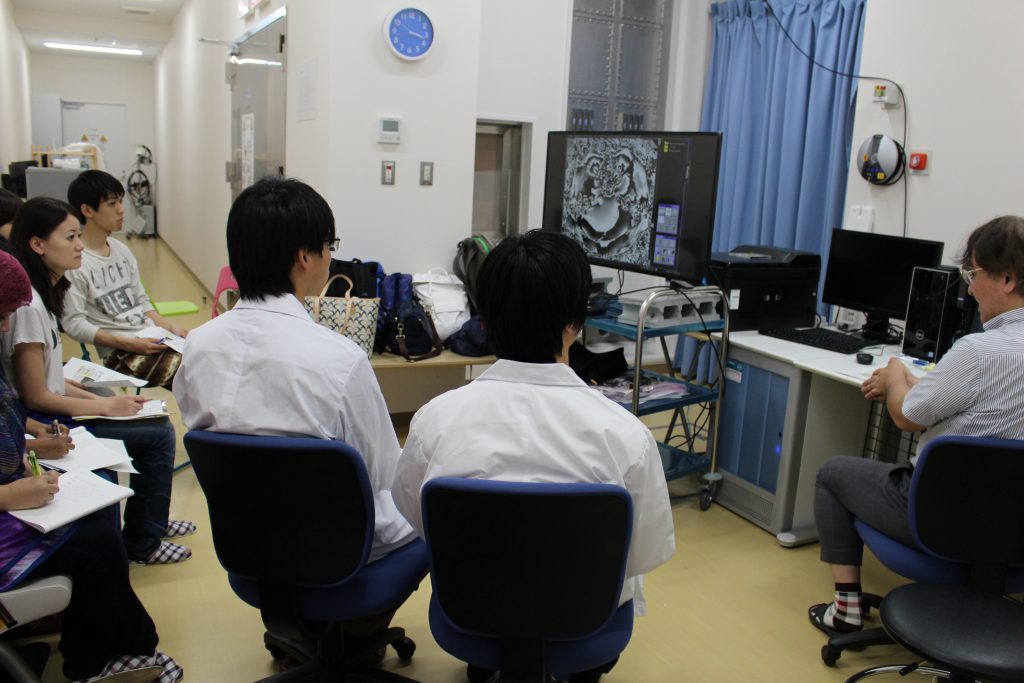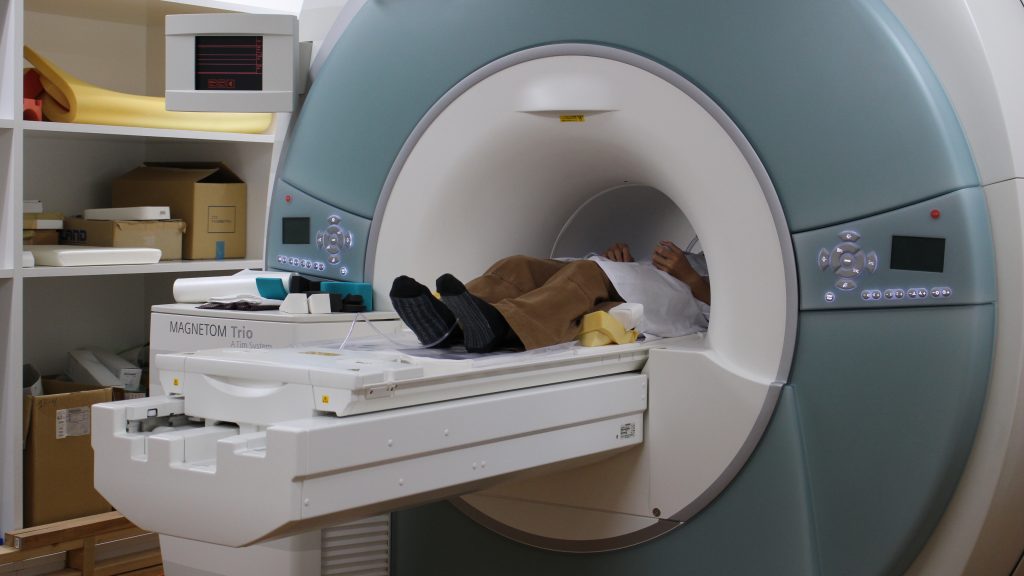概要
Magnetic Resonance Imaging (MRI) is one the most powerful methods for providing detailed information with high contrast throughout the human body inclusive of the brain compared to any other modalities. It is widely used in current clinical to detect disorders. MRI has now become an indispensable tool that medical engineering has created. Not limited to fine structures, MRI can also be employed to explore function of the brain and other organs of the human being.
Agendas of 3T-MRI hands-on on anatomical and fMRI imaging & analysis.
1. Brief introduction on MRI, from very basic principle to various applications, and safety issues.
2. fMRI acquisition & analysis Half of the students will experience fMRI scanning in the MRI (i.e., be scanned actually) and another half will try analysis after the 7T-MRI hands-on. Please consider in advance which do you like, to be scanned or to analyze.
Agendas of 7T-MRI hands-on using a fruit.
Despite of its high capability, the 7T-MRI system has many technical difficulties. However, it makes 7T as a sort of ideal tool to learn basic issues of high-field MRI.
In this scan hands-on session, the following would be learned. 1) B0 homogeneity: importance of shimming. 2) B1 mapping to observe intra-slice B1 inhomogeneity. 3) 3D T1-weighted imaging and B1 effect. 4) Contrast modification with different inversion times in FLAIR. 5) CEST imaging to observe glucose distribution.

参加者の声
私はLIMSの研究としてMRI用プローブの開発を考えており、そのためにMRIの現状について詳しく知りたいと思い本演習に参加した。今回の演習では、MRIの基本的な説明から始まり、3T-MRIの測定および解析、7T-MRIの見学を行った。工学を専門としてきた私にとってMRIはあまり馴染みがなく、現在様々なタイプのMRIが開発されていることを知った。高分解能のイメージングを達成するために高磁場のMRIが開発されており、3T-MRIは既に臨床でも使用されるものになっているとのことだった。そして、実際に3T-MRIの測定を体験した。測定中に指を動かしている状態と何もしていない状態を交互に繰り返し、脳のどの部分が機能しているか観測した。今回がMRIを受ける初めての体験で、頭が固定されて窮屈であり長時間の測定の場合大変であることを実感した。測定したデータの解析は、Matlabで行った。このソフトについても、初めての体験で解析も大変であると感じた。そして、7T-MRIの見学では、高磁場MRIの原理や長所、短所について説明していただいた。高磁場にすることで、分解能の向上など多くの長所があるが、様々な短所もあることを知った。詳細な説明については理解できなかった部分もあるため、今後自分でも高磁場MRIについて詳しく調べたい。本演習はMRIの現状について知る貴重な経験となり、今後の研究への良い刺激となった。分解能や測定時間の長さ等、現状の問題を化学の観点から解決する方法を模索していきたい。
初めにMRIについて簡単な説明を受けた。その中で診断用に広く使われているのは3Tでは無くて1.5TのMRIであること、トンネル型のMRI以外にもドーナツ型のMRIが存在するということ、また実験動物専用の高磁場のMRIがあることを学んだ。説明の後は希望者がfMRIを体験する機会があり私も参加した。MRI内部は想像していたよりも窮屈であり、閉所恐怖症の方がMRIを受けられないという話に納得できた。こういった方々のために、より開放的なMRIの開発が必要であると感じた。またfMRI時は連続撮影によりコンピュータを用いて脳を三次元化するため、体を動かすことができない。今回は5分間という短い時間であったが少し疲れを感じた。通常は30分や1時間程度診断を行うため、疲れのあまり被験者が居眠りをしてしまうことが問題であると先生はおっしゃっていた。より短時間で試験を終わらせるために、一刻も早い安全で安定した高磁場MRIの導入が臨床現場で求められている。


